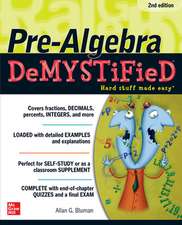Corrosion Control
Autor S. Bradforden Limba Engleză Paperback – 18 mai 2012
Preț: 644.18 lei
Preț vechi: 757.85 lei
-15% Nou
Puncte Express: 966
Preț estimativ în valută:
123.28€ • 133.86$ • 103.55£
123.28€ • 133.86$ • 103.55£
Carte tipărită la comandă
Livrare economică 23 aprilie-07 mai
Preluare comenzi: 021 569.72.76
Specificații
ISBN-13: 9781468488470
ISBN-10: 1468488473
Pagini: 372
Ilustrații: XIV, 354 p. 144 illus.
Dimensiuni: 155 x 235 x 20 mm
Greutate: 0.52 kg
Ediția:Softcover reprint of the original 1st ed. 1993
Editura: Springer Us
Colecția Springer
Locul publicării:New York, NY, United States
ISBN-10: 1468488473
Pagini: 372
Ilustrații: XIV, 354 p. 144 illus.
Dimensiuni: 155 x 235 x 20 mm
Greutate: 0.52 kg
Ediția:Softcover reprint of the original 1st ed. 1993
Editura: Springer Us
Colecția Springer
Locul publicării:New York, NY, United States
Public țintă
ResearchCuprins
1 Introduction.- 1.1 What Is Corrosion?.- 1.2 The Cost of Corrosion.- 1.3 Safety and Environmental Factors.- 1.4 Corrosion Organizations and Journals.- 2 Basic Corrosion Theory.- 2.1 Thermodynamics.- 2.2 Electrode Reactions.- 2.3 Electrode Potentials.- 2.4 Corrosion Products and Passivity.- 2.5 Classifications of Corrosion.- *2.6 Pourbaix Diagrams.- 2.7 Corrosion Rates.- Study Problems.- *3 Electrochemical Corrosion Theory.- 3.1 Exchange Current Density.- 3.2 Activation Polarization.- 3.3 Concentration Polarization.- 3.4 Resistance Polarization.- 3.5 Polarization Diagrams.- Study Problems.- 4 Metallurgical Cells.- 4.1 Metal Purity.- 4.2 Crystal Defects.- 4.3 Grain Structure.- 4.4 Solid Solution Alloys.- 4.5 Galvanic Corrosion.- 4.6 Dealloying.- 4.7 Intergranular Corrosion.- 4.8 Corrosion of Multiphase Alloys.- 4.9 Stress Cells.- Study Problems.- 5 Environmental Cells.- 5.1 Corrosive Concentration.- 5.2 Velocity.- 5.3 Temperature.- *5.4 Polarization Curves.- 5.5 Crevice Corrosion.- 5.6 Pitting.- 5.7 Microbial Corrosion.- 5.8 Temperature Cells.- 5.9 Condensate Corrosion.- 5.10 Stray Current Corrosion.- Study Problems.- 6 Corrosive-Mechanical Interactions.- 6.1 Erosion—Corrosion.- 6.2 Corrosive Wear.- 6.3 Corrosion Fatigue.- 6.4 Hydrogen Damage.- 6.5 Stress-Corrosion Cracking.- Study Problems.- 7 Corrosion in Major Environments.- 7.1 Natural Environments.- 7.2 Organic Environments.- 7.3 Mineral Acids.- 7.4 Common Inorganics.- Study Problems.- 8 Corrosion Measurement and Failure Analysis.- 8.1 Types of Tests.- 8.2 Laboratory Tests.- 8.3 Test Specimens.- 8.4 Electronic Probes.- 8.5 Failure Analysis.- Study Problems.- 9 Materials Selection.- 9.1 Stainless Steels.- 9.2 Nickel and Nickel Alloys.- 9.3 Other Metals and Alloys.- 9.4 Plastics.- 9.5 Other Nonmetallics.- StudyProblems.- 10 Protective Coatings.- 10.1 Metal Coatings.- 10.2 Conversion Coatings.- 10.3 Organic Coatings and Linings.- 10.4 Glass and Cement Coatings.- Study Problems.- 11 Corrosion Inhibitors.- 11.1 Passivators.- 11.2 Barrier Inhibitors.- 11.3 Poisons.- *11.4 Polarization with Inhibitors.- 11.5 Scavengers.- 11.6 Neutralizers.- Study Problems.- 12 Cathodic and Anodic Protection.- 12.1 Cathodic Protection.- 12.2 Sacrificial Protection.- 12.3 Impressed-Current Cathodic Protection.- 12.4 Anodic Protection.- *12.5 Electrochemical Theory.- Study Problems.- 13 Designing for Corrosion.- 13.1 Allow for Uniform Attack.- 13.2 Minimize Attack Time.- 13.3 Restrict Galvanic Cells.- 13.4 Protect against Environmental Cells.- 13.5 Avoid Corrosive—Mechanical Interaction.- 13.6 Design for Inspection and Maintenance.- Study Problems.- 14 Oxidation: Metal—Gas Reactions.- *14.1 Thermodynamics of Oxidation.- 14.2 Oxide Structure.- 14.3 Kinetics of Oxidation.- 14.4 Oxide Scales.- 14.5 Other Gas—Metal Reactions.- 14.6 Hot Corrosion.- Study Problems.- 15 Oxidation Control.- 15.1 Alloy Theory.- 15.2 High-Temperature Alloys.- 15.3 Coating Requirements.- 15.4 Oxide Coatings.- 15.5 Oxidizable Coatings.- Study Problems.- References.










